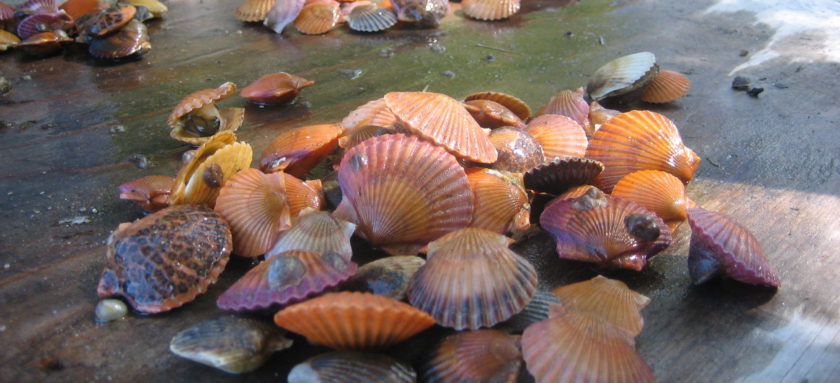The famed bay scallops of eastern Long Island came back after their near-death experience of brown tides only after years of a dedicated restoration effort. Now biologists are worried the fishery may be at risk with increasing water temperatures.
New York baymen are seeing the worst Peconic Bays scallop season in years, after summer 2019 water temperatures that reached a sustained July peak of 84 degrees in some places.
The scallops were devastated by severe brown tides for more than a decade starting in 1984 and were nurtured back with many years of work by scientists, baymen, aquaculture experts and volunteers. The shellfish face other threats like being eaten by cownose rays and other predators. But biologists think this situation is different.
“I do believe this one in dues to high water temperatures and low dissolved oxygen that may have coincided with spawning,” Long Island University professor Steve Tettlebach who works with the Cornell Cooperative Extension told National Fisherman. “So, the combination of these stressors is the most plausible explanation for the die-off of adults.”
The damage became evident during the Cornell fall scallop survey when workers found thousands of empty shells, and baymen came home largely empty-handed from the fall season.
That contrasted to the fall 2018 set of young scallops and 2019 spring survey, which had optimistically raised the probability that bay scallops would continue to grow their remarkable recovery. The 2017 and 2018 harvests of 100,000 pounds each were 30 times those seen in the 12 years before 2006, Tettlebach noted.
“But at this point, this shaping up to be a dismal harvest,” he said. The extension team is putting together other data on water quality and temperatures, and potential wild-card predators including cownose rays, a bane of mid-Alantic shellfish growers that have been reported in Long Island waters.
“The only good news on the scallop front is that we have seen a very good set, at least in the eastern Peconic,” so there is hope the causes of the 2019 die-off won’t repeat in 2020, Tettlebach added.
Kim Tetrault of the Cornell extension, a veteran of three decades culturing and restoring scallops, said the 2019 collapse is striking for lacking the longtime culprits like algae blooms. He suspects water temperature as the main trigger.
“After an essentially total loss of the stocks, it has taken many years of restoration effort to finally bring them back to a viable fishery,” says Tetrault. “This is the first time that an almost complete die off of adults has occurred that does not appear to be caused by the usual suspects.”
Despite the high summer water temperatures there were no fish kills that would be correlated with low oxygen levels, nor would cownose rays or other predators be enough to cause a “bay-wide wipeout,” Tetrault said. However, he is “not particularly surprised by this event, as scallops are extremely precarious. It seems as though during any given year, all of the stars and planets need to be aligned for a good set.”
That includes healthy adults well fed with the right kind of algae before spawning, good weather and water quality while scallop larvae are growing, the right conditions for setting and little threat from disease.
“Nothing is particularly easy for scallops who only really get one or two chances in their lives to continue to recruit and keep the species stable,” Tetrault added. “The bright side is the 2019 scallop set seems to have achieved some of those conditions before their parents died out.







